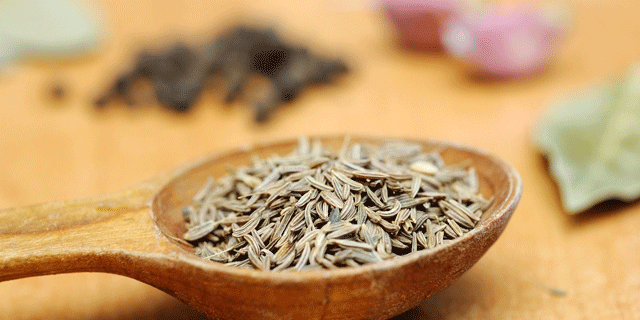Cumin. It’s the smell that wafts off the grill when summer seafood is sizzling. The smell that comes off of the stove when winter chili is simmering. The versatile little spice pronounced KUH-min, packs a punch. But for such a useful spice, it’s often overlooked.
An old spice, cumin, which is native to the Mediterranean, is said to have originated in ancient Egypt. Early Mediterranean peoples used cumin for digestion, and in India people cumin was used to fight colds. The health benefits of cumin continue to be studied today, but the history isn’t just medicinal. Thousands of years ago, people were using cumin as way to add flavor to food in much the same way we do today. Spanish colonists brought the spice to the Americas, where it is widely found today throughout Latin American countries, especially Brazil and Mexico. The nutty, peppery flavor of cumin can be mashed into guacamole, tucked inside empanada fillings, and in many marinades and spice rubs used on seafood, meat and poultry.
While cumin is a potent spice with a strong bitter flavor and warm aroma, it comes in a small package. The spice comes from the seeds of small dried fruit of the herb annual plant Cuminum cyminum. The plant grows to just under two-feet tall. Small white or pink flowers bloom on the plant and it’s from those flowers that cumin seeds come from. The seeds are oblong in shape and come in amber, white and black. Each color seed has a slightly different flavor, with amber being the most common. You can buy cumin whole or ground. The ground seeds turn a yellow to dark brown color. Whole seeds tend to have a strong flavor that lasts longer and dry roasting the seeds before use will bring out more of the flavor. Store cumin in an airtight, cool, dry place and the flavor should keep for at least six months.
Looking for a new way to cook with cumin at home? We enlisted New York-based chef Antelmo Ambrosio of SouthWest NY and Aruba-based chef Matthew Boland of the Westin Resort and Casino to help us create the perfect Latin dishes using cumin. Here are their takes on Roasted Mahi Mahi and Seafood Ceviche Shooters.
Roasted Mahi Mahi with Papaya Salad and Black Bean Sauce
- 2 ounces achiote paste
- 1 ounces chipotle puree
- 2 fresh garlic cloves
- 1/2 fresh shallot
- 1 pinch of fresh toasted cumin
- 4 ounces cold water
- 1 ounce olive oil
- 1 cup fresh red papaya cut in small cubes
- 1 teaspoon extra virgin olive oil
- salt and pepper, to taste
- 1 46 ounce can tomato juice or V-8 Juice
- 4 pounds blanched and chopped mixed seafood, shrimp, calamari, scallops and conch meat
- 2 lemons
- 2 teaspoons cumin
- 1 ounce Lea and Perrins
- 1 teaspoon white pepper
- 1 bunch cilantro
- 1 ounce horseradish
- 2 ounces sugar
- hot sauce




![Making Mealtime Matter with La Familia: Easy Sofrito [Video]](https://thelatinkitchen.com/wp-content/uploads/2015/10/sofrito-shutterstock__0-500x383.jpg)
![Easy Latin Smoothies: Goji Berry Smoothie [Video]](https://thelatinkitchen.com/wp-content/uploads/2015/12/goji_berry-shutterstock_-500x383.jpg)
















![Fun and Fast Recipes: Fiesta Cabbage Salad [Video]](https://thelatinkitchen.com/wp-content/uploads/2015/11/fiesta_cabbage_slaw-shutterstock_-500x383.jpg)









